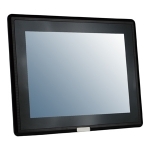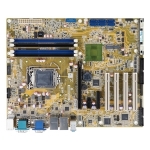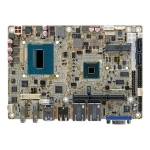Introduction
Solid State Drive (SSD) technology has come on in leaps and bounds since it was first introduced during the 1980’s. Early models used volatile memory, such as DRAM which lost all data as soon as the power was lost and suffered from a very short working life.
With the advancement of SSD technology, including features such as wear levelling, error correction and TRIM SSD’s can achieve read/write speeds in excess of mechanical hard drives. Recent reductions in the price per Gb has also fuelled the popularity of SSD throughout modern computing platforms. Another contributing factor in the rise of SSD popularity can be attributed to the recent floods in Malaysia which are still affecting the availability and pricing of mechanical drives.
Write Speeds
With the ever increasing demand for data throughput over the years there has been a massive increase on data read/write speeds in both mechanical and solid state devices. On the performance side, the advantages of SSDs include faster boot time, faster random read / write and faster sequential reads for larger files. This has led to an improved user experience with less waiting time at start-up, loading applications, opening large files and in general use. Some SSD’s can accomplish read speeds up to 500MB/s (dependant on model, and manufacturer) and write speeds up to 300MB/s, this is continually increasing with the advancements made in technology. Some manufacturers are taking advantage of the now commonly used PCIe slots found in modern PC’s, with an increased bandwidth which pushes the read/write speeds even further.
Shock and Vibration
High resistance to shock and vibration, plus extended temperature ranges, makes SSD’s the ideal rugged replacement for applications where the mechanical hard drive will just not do.
Additionally, some manufacturers are able to offer MIL-STD drives that will suit the most demanding applications and requirements. From NSA approved deletion/destruction through to enhanced data security. With varying sizes in capacity, and physical dimension, 2.5” Standard drive through to Disk on Modules, there is an SSD to suit all applications and environmental requirements.
Components
The key components of Solid State Drives (SSD) are the controller and the memory used to store the data. The primary memory component in an SSD had been DRAM volatile memory since they were first developed, but since 2009 it is more commonly NAND flash non-volatile memory which had been introduced in 2002.
A key component of an SSD is the controller which incorporates the brains that bridge the NAND flash memory to the host computer, which performs the following functions:
- Error Correction (ECC)
- Wear Levelling
- Bad Block Mapping
- Read and Write Caching
- Garbage Collection
- Encryption
Heat, Noise and Power Consumption
In modern computers, the cooling fans and hard drives create levels of audible noise. Obviously, with no moving parts, SSD’s are completely silent giving them an additional advantage to embedded computers where noise levels are required to be minimal. Additionally SSDs consume far less power making them a greener option. Lower heat output also means system and cabinet cooling can be reduced; thereby further enhancing their green credentials.
Software for monitoring mechanical drives has been available for many years, and we are now seeing the emergence on to the market place for solid state drives to aid in the maintenance of the NAND flash, and ease the minds of the user in regards to the life cycle, and monitoring the life of the drive itself.
Operating Systems
Older versions of operating systems will continually write data back to the drive (page file), which will reduce the expected life duty of the NAND flash. Wear levelling has been advanced to help reduce the amount of cycles being used. Windows XP and Vista treat an SSD as a mechanical hard drive. To support the increasing market of SSD being used within systems, Microsoft added a number of features into Windows 7 to improve the life expectancy and performance of Solid State Disks:
- Disk activity has been optimized to reduce the amount of disk writes and cache flushes. All SSDs have a limited number of write/erase cycles, so this reduction improves the life of the device as well as improving the speed of operation.
- Disk defragmentation is disabled when a device is recognised as an SSD.
- As data is written and erased from a standard hard drive over time it becomes fragmented . Defragmentation relocates data sequentially on the drive, so the head does not have to travel as much. This feature is not only unnecessary on an SSD, but the additional reading and writing of the process will shorten its life.
- Windows 7 disables Superfetch, ReadyBoost and boot / application launch prefetching. These features were added to Windows Vista to improve the performance of conventional hard drive I/O but they have proved to be of no benefit for newer SSDs which make no distinction between random and sequential operation.
- Windows 7 supports the ATA TRIM command. This feature gives the SSD the control to erase unused data blocks. This will reduce the number of block erase and merge operations to further extend the life of the SSD and improve performance.









